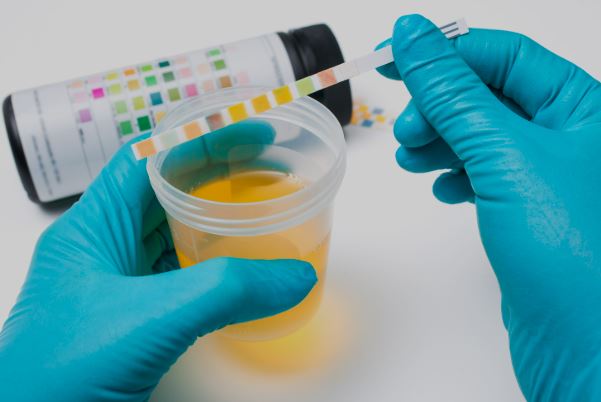
A Urinary Tract Infection (UTI) is one of the most common bacterial infections, affecting millions of people worldwide each year. It occurs when bacteria enter and multiply within the urinary system, which includes the kidneys, ureters, bladder, and urethra. UTIs are more common in women due to anatomical differences, but they can affect men, children, and older adults as well.
While most UTIs are mild and treatable, if left untreated, they can spread to the kidneys and lead to severe complications such as kidney damage or sepsis. Early recognition and treatment are therefore essential.
The urinary tract plays a vital role in filtering waste products from the blood and eliminating them from the body in the form of urine. It consists of:
Kidneys: Filter blood and produce urine.
Ureters: Carry urine from the kidneys to the bladder.
Bladder: Stores urine until it is excreted.
Urethra: A tube that carries urine from the bladder out of the body.
In a healthy urinary system, urine flow helps flush out bacteria. However, when bacteria manage to overcome these defense mechanisms, infection can occur.
UTIs are most commonly caused by bacteria, with Escherichia coli (E. coli) responsible for nearly 80–90% of cases. Other bacteria like Klebsiella, Enterococcus, and Proteus species may also be involved.
Female Anatomy: Shorter urethra makes it easier for bacteria to reach the bladder.
Sexual Activity: Increases the chance of bacteria entering the urinary tract.
Poor Hygiene Practices (especially after bowel movements).
Urinary Catheters: Common source of infection in hospitalized or immobile patients.
Menopause: Reduced estrogen alters protective vaginal flora.
Pregnancy: Hormonal changes slow urinary flow, increasing risk.
Underlying Medical Conditions: Diabetes, kidney stones, enlarged prostate, or weakened immune system.
Dehydration: Reduced urine output decreases natural flushing of bacteria.
Symptoms vary depending on whether the infection is in the lower urinary tract (bladder, urethra) or upper urinary tract (kidneys).
Frequent urge to urinate
Burning or pain during urination (dysuria)
Passing small amounts of urine frequently
Cloudy, strong-smelling, or bloody urine
Pelvic or lower abdominal discomfort
High fever and chills
Flank or back pain
Nausea and vomiting
Fatigue or general malaise
In older adults, symptoms may be vague, such as confusion or changes in behavior.
Diagnosis of a UTI is usually straightforward and involves a combination of clinical assessment and laboratory tests.
Medical History & Physical Examination: Focuses on symptoms, past infections, sexual history, and risk factors.
Urinalysis: Detects white blood cells, red blood cells, and bacteria.
Urine Culture & Sensitivity Test: Identifies the exact bacteria causing infection and determines which antibiotics are most effective.
Imaging (Ultrasound, CT scan): Used in recurrent or complicated cases to check for structural abnormalities, stones, or obstruction.
Cystoscopy: In selected patients with frequent UTIs, a camera may be used to inspect the bladder and urethra.
Treatment depends on the severity, location, and frequency of infections.
Antibiotics: First-line treatment. A short course (3–7 days) is usually sufficient for uncomplicated UTIs, while complicated or kidney infections may require longer courses.
Pain Relief: Medications like phenazopyridine can relieve burning sensations during urination.
Hydration: Drinking plenty of fluids helps flush bacteria out.
Lifestyle Modifications: Improved hygiene, urinating after sexual activity, and avoiding irritants like perfumed soaps.
Surgery is not usually required for simple UTIs. However, in recurrent or complicated UTIs, procedures may be necessary to correct underlying causes such as:
Removal of kidney stones.
Treatment of enlarged prostate (in men).
Repair of structural abnormalities in the urinary tract.
When surgery is needed (for complicated UTIs or anatomical abnormalities):
Kidney Stone Removal:
Stones may be broken using shock wave lithotripsy or removed via minimally invasive surgery.
Prostate Surgery:
In men with urinary retention due to enlarged prostate, procedures such as TURP (Transurethral Resection of Prostate) may be performed.
Urethral Stricture Repair:
If scarring blocks urine flow, surgical correction may be required.
These interventions aim to restore normal urine flow and prevent recurrent infections.
For patients undergoing surgical treatment:
Hospital Stay: May be needed for monitoring after major procedures.
Antibiotics: Given to prevent or treat infection.
Hydration & Bladder Care: Adequate fluid intake supports recovery.
Catheter Care: If a catheter is placed, patients are taught hygiene measures to prevent new infections.
Follow-Up: Regular check-ups and repeat urine tests ensure the infection has cleared and no recurrence occurs.
If untreated or recurrent, UTIs can lead to:
Kidney Infection (Pyelonephritis): Can cause permanent kidney damage.
Sepsis: Infection spreading to the bloodstream, life-threatening if not managed.
Recurrent UTIs: Multiple infections within a year, often requiring long-term preventive strategies.
Pregnancy Complications: UTIs in pregnancy can increase the risk of preterm birth and low birth weight.
Chronic Kidney Disease (rare): In severe or untreated cases.
Most uncomplicated UTIs respond well to antibiotics and resolve within a few days. With appropriate treatment, the prognosis is excellent.
However, patients with recurrent infections, structural problems, or weakened immunity may need long-term monitoring. Preventive measures and treating underlying conditions greatly improve outcomes.
Seek medical attention if you experience:
Burning or painful urination lasting more than 24–48 hours
Frequent or urgent urination with little output
Blood in urine
Fever, chills, or back/flank pain
Recurrent UTIs (two or more within six months)
UTI symptoms during pregnancy
Delaying treatment increases the risk of kidney infection and serious complications.
Urinary Tract Infections are common but often manageable with prompt treatment. Recognizing the early symptoms, such as painful urination and frequent urges, is crucial for preventing complications. While most UTIs can be treated with antibiotics and lifestyle measures, complicated cases may require surgical intervention to correct underlying problems. Maintaining good hydration, practicing proper hygiene, and seeking timely medical advice are key to reducing risk and ensuring recovery.
If you suspect a UTI, consult a healthcare professional for accurate diagnosis and appropriate treatment.
Chat With Me